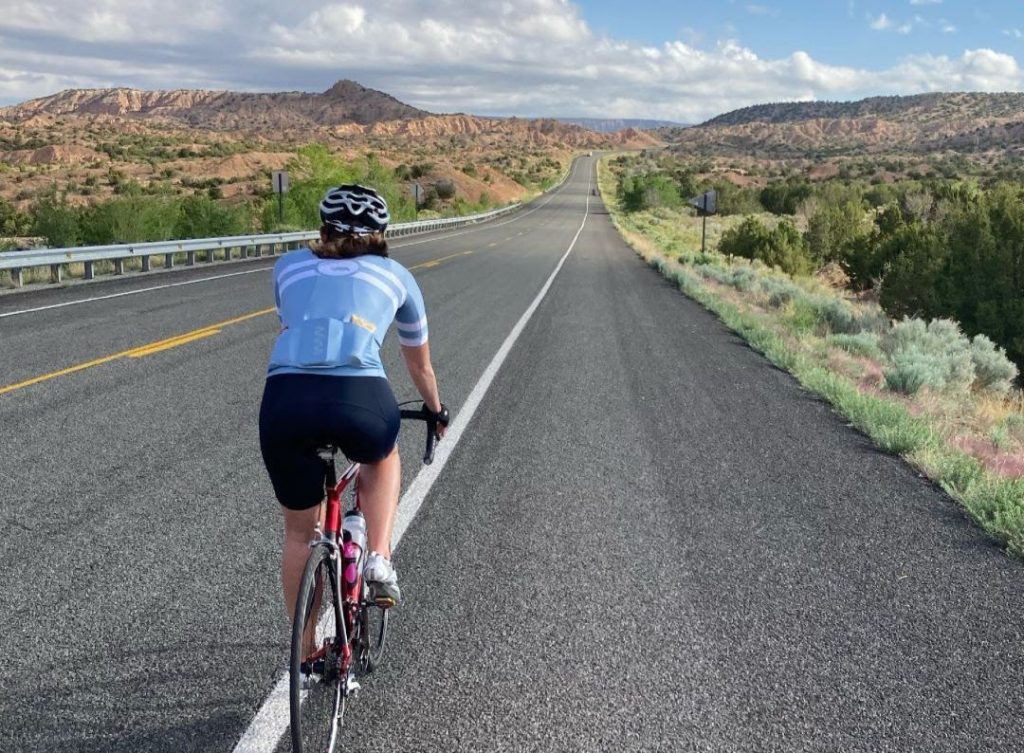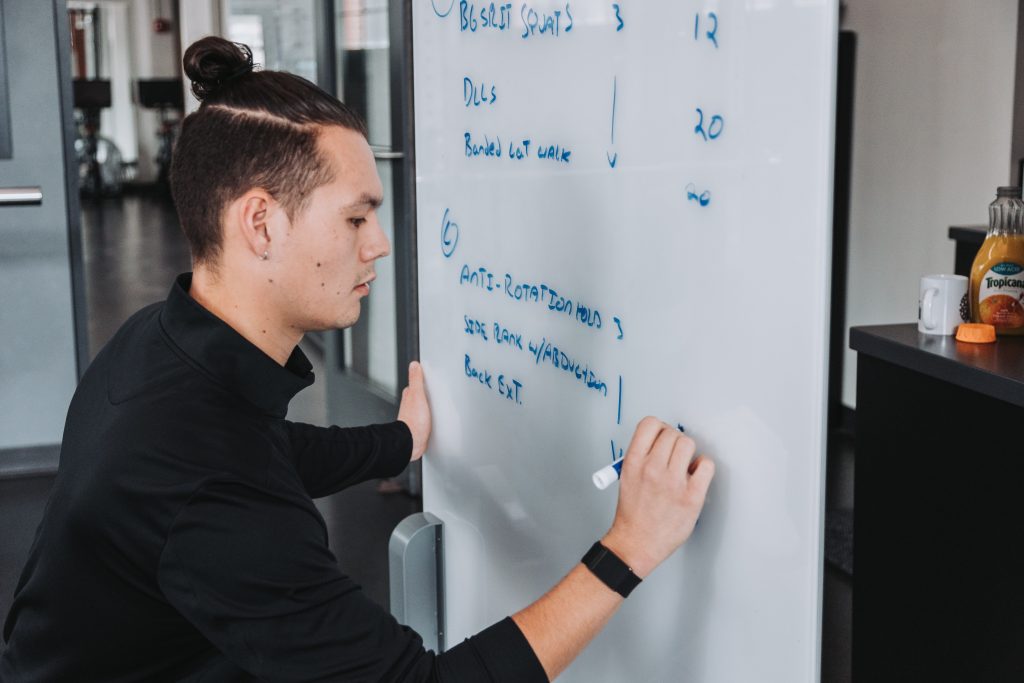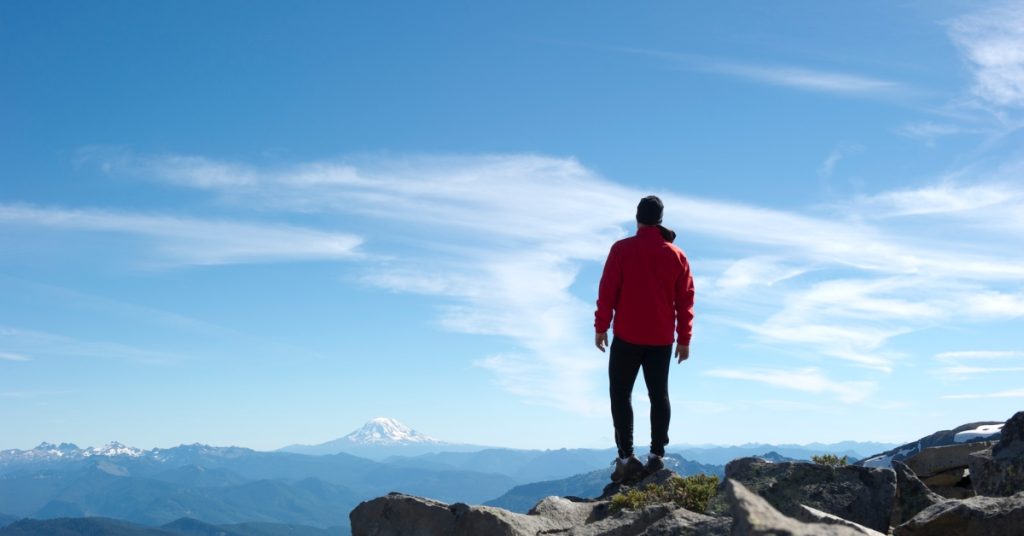The world of competition is filled with grit, fight, aggression, effort, and discipline. Training to meet those demands requires that we push ourselves, always striving to do better, wake up early even on days when we want to sleep in, and stick to that goal pace for the final repeat of the workout making it as fast or faster than the first.
One of the many reasons I enjoy and even crave swimming is that it is based on a completely different approach to training. True, the swim competition includes all the demands of running, cycling, climbing, and skiing but it exists in an environment of fluidity, suspension, buoyancy, and float: the world of water. We cannot muscle our way through the water. Instead, we feel and respond to the water.
Swimming is YIN in a world of YANG.
When we swim, we are in the aquatic environment, there is no grounding by gravity as there is on land. In the water, we follow the laws of hydrodynamics, not aerodynamics. We train in a hypoxic environment, not in an abundance of oxygen. We are positioned horizontally, not vertically. We employ our full-body, upper, core, and lower in that order instead of lower, core, and maybe upper. We move in all 3 planes instead of being dominated by the sagittal world. Finally, we are surrounded and suspended by liquid, H2O.
Swimming is nuanced and subtle. It’s about timing and patience and feeling our body as it travels through the water. We must understand the water’s fluidity to find resistance, catch it and then pull ourselves forward horizontally. Once we maximize the water’s resistance, we then aim to glide forward as easily as possible, by limiting as much friction as possible. Swinging our arms faster or kicking our feet harder especially above the water’s surface fail to propel us forward in the desired powerful glide.
Swimming also requires flexibility as much as it benefits from power. We need optimal mobility to extend our joints to their full range of motion and produce the horizontal glide posture necessary to move efficiently. We synchronize the timing of the upper and lower body and connect both through the core.
The best image of the swim technique I have ever heard was from the University of Colorado at Boulder’s swim coach, Eney Jones: swimming is a combination of paddling and hula dancing: Our upper body looks like a surfer paddling on a wide surfboard and our lower body rotates side to side like a hula dancer.
Most basically, humans develop in a liquid environment consisting of part water: the amniotic fluid. Yet, it takes most adults a lot of practice to feel comfortable in the water again.
So how do we become comfortable moving through water?
TECHNIQUE:
Of all the sports I coach, swimming and Nordic skiing are the most technical and most similar. The swim consists of pull and glide while Nordic is made up of kick and glide. Both sports incorporate a strong upper body pull, balance, core activation, and maximal glide on the most slippery of surfaces: water and snow. And by no coincidence, snow is made up of the element water.
The concept can be broken into two simple parts: force and glide. In swimming, the underwater pull and kick create resistance against the water to propel us forward. In the glide phase, we stay horizontally balanced to move forward frictionless.
THE GLIDE:
Start with the glide to ensure all our work from the pull produces a benefit we can enjoy: effortless forward motion.
The beauty of the glide is that the body position gives you effortless forward motion. Relaxation is a requisite. There is a fluidity to water and we match that with the fluidity to our body, its joints, and movement.
How do we achieve the glide?
We optimize glide through water when we are horizontal and streamlined.
What is streamlined?
Streamlined is as straight a line as possible and for swimming, we are in the horizontal position.
The head, shoulders, hips, and feet are lined up along the surface of the water. If the legs drop down toward the bottom of the pool or the head lifts up we are now dragging more surface area, creating friction and reducing glide.
How to achieve a streamlined position?
Lie down on the ground supine (on your back/face up) with both your arms straight overhead and palms together or one laid one on top of the other. Completely straighten your elbows, back, and knees. Point your toes to make the longest line possible from fingertips to toes. Push your back against the floor. You can try this standing against a wall or face down to emphasize the opening required on our anterior chain: chest, shoulders, and hips. For most, it is a challenge to achieve that stretched-out, straight line.
How to improve your line?
If you have a hard time achieving that position on land, you will not be able to achieve it in water. Improve joint flexibility and optimize muscle length through dynamic mobility and static flexibility practice. Mobility exercises for the chest, shoulders, hips, and ankles can help. Foam rolling lats and quads help. Use a ball to roll the chest.
Try these 5 exercises to help:
Wall Wings and Active Chest Stretch:
3D Hip Flexor:
Vajrasana Pose and Extended Child’s Pose:
Back Extensions:
Plank Variations:
Once you can extend your joints in as full a range of motion as possible, you achieve optimal glide and effortlessly move through the water. But something has to produce that forward momentum.
FORCE
THE PULL
As the Great Mohammed Ali said, “float like a butterfly, sting like a bee”. In swimming, the sting produces the float and the majority of the sting is created by the pull. Unlike the glide in this phase of the swim stroke our goal is to create as much resistance and friction in the water as possible. During the glide, we are accelerating but just before we are about to decelerate, we must initiate the pull.
The pull begins from the outstretched glide position and we initiate the pull with a high elbow catch, internally rotating at the shoulder. This places the forearm and the palm of the hand in their most powerful position: 90-degree elbow bend and fingertips pointing down to the bottom of the pool.
How to improve your pull:
Stake Drill: Imagine there are rods or stakes anchored in the pool and lined up along the length on either side of you. Every time you move past one stake imagine grabbing it and then pulling yourself forward past it until you reach the next one. You have to reach as far as you can to get to the next stake and then you are repeating the high elbow catch to grab the stake and pull yourself past it.
Paintbrush Drill: This sets our hands and forearm in the correct position for a powerful pull.
Imagine your fingers are a paintbrush and every time you perform the high elbow catch and pull back, you paint a line down the bottom of the pool with your fingertips.
Sculling and Fist Drills: These help you feel how to create resistance in the water using your palm and forearm.
Sculling:
Begin with the arms outstretched overhead. Bend just at the wrist and move the palm side to side and figure 8. Be sure to not move from the shoulder or elbow but just from the wrist break.
Fist Drill:
Make a fist with each hand and swim your stroke. When we initiate the pull with the high elbow catch, we set the forearm perpendicular to the water’s surface. With the hands in a fist, we cannot rely on palms to produce that force. This drill takes some practice so stick with it, it will pay off generously.
Drag and Tag:
This drill has two parts: the “drag” is keeping our fingertips in the water as we bring the recovery arm forward. This promotes a high elbow position and relaxes the forearm, hand, and fingertip so we can rest between pulls.
The “tag” is keeping the lead glide hand stretched out overhead until the recovery arm tags it. We can feel the difference as we optimize the glide in this drill. We also learn the correct timing for freestyle swimming. The arms are not “windmill-ing” or flailing. Instead, one arm is pulling while the other is gliding. From the above water view, fast swimmers look as if they are moving slowly; the speed happens underwater during the pull.
Overlap:
This drill bridges the gap between drag and tag and actual swimming. We take out the drag segment and wait only until the fingertips of the recovery arm enter the water before we pull the lead glide arm back. I often swim this way and find my times are faster than when I don’t exaggerate that timing. Practice swimming 200 overlaps, then 200 swims, alternating for 20-minutes, working up to 40-minutes. It’s a great way to improve endurance and drill the timing into muscle memory until it becomes automatic.
Paddles:
These create more resistance in the water so the main purpose is to increase strength. Progress slowly into using paddles for more of the workout and if the shoulders speak, back off a bit. Still, the paddles increase the surface area of the hand and wrist so we can really feel the resistance as we pull back.
THE KICK: (Part 2 of “The Force”)
The kick aids in force as well by helping to propel us forward. It also helps us balance in the water. For distance swimming, the kick is very minimal, especially for wetsuit legal triathlons where the feet float with the buoyancy of the neoprene/rubber. Keeping the kick quiet keeps the heart rate down and saves the legs for the bike and run. Swimming with a pull buoy helps simulate the wetsuit effect, so it’s great to use before a wetsuit legal open water swim. Still, it’s helpful to swim without the pull buoy to learn how to achieve the horizontal glide position and also to feel how the kick compliments forward motion with simply a light paddling motion. The feet stay close to the surface and ankle flexibility is key.
The kick is both a forward and backward motion, but most beginners will kick back by bending at the knees when in fact, the hips extend to bring the leg back. The kick originates at the hips, moves through the knees, and then travels down to the ankles, feet, and toes. If the movement is too great in the joints, we create undesired resistance with the lower body that inhibits our forward glide through the water. The knees and hips are instead mostly extended, soft and flexible, extending and/or rotating.
How to improve your kick:
Seaweed Image:
Imagine seaweed in the ocean, slowly moving back and forth with the current, the surface area soft and supple. So too is the swimmer’s ankles and toes pointed but not rigid, moving through the water like seaweed in the current.
Dolphin Kick:
Imagine your body is a whip from your hips down to your toes. When you crack that whip the force moves sequentially down the body and out through the toes.
It’s easier to feel this effect by simultaneously kicking both legs as in the dolphin kick.
Practice a few sets of 2 x 25 dolphin kicks, 25 free-kick, then swim 50 focusing on retaining that fluid sequence through the lower body.
Kick on Back:
With arms overhead streamlined, kick face up to feel how the kick has a forward motion component and teach us not to kick backward. We bend the knees just a little to produce a forward kick that propels us through the water.
Kick on Side:
Rotate onto your side with the top arm straight and placed on top of your hip. The bottom arm is fully extended overhead with a flat palm near the surface of the water. Your top shoulder should stay out of the water. This position helps us understand the rotation of the body and achieve balance in a stacked position.
Now rotate from the side position to the prone position and back to the same side. Next, move from side to prone to other side and finally to back before you return to the side. The rotation is generated from your hips so hips rotate and shoulders follow. Think surfer paddle with hula dancer.
Fins:
Fins are a great tool to promote strength because they produce more resistance through the water. They can also help us to feel that whip or mermaid tail effect. Again, practice your dolphin kick with fins to get the sensation, then kick a few sets of 25’s alternating dolphin and free-kick. Finally, try to feel this similar sensation when you remove the fins.
I recommend kicking without a kickboard in order to maintain the pure horizontal body position required to glide through the water the most efficiently.
Mix it Up:
Kick free, fly/dolphin, breast, and even side stroke to feel the distinction between propulsion and glide, and the lower body’s role in balancing the rest of the body. Changing up the strokes improves your feel of the water and recruits complimentary movement in different planes.



